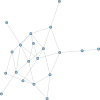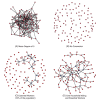Transmission-dynamics models for the SARS Coronavirus-2
- PMID: 32978876
- PMCID: PMC7536961
- DOI: 10.1002/ajhb.23512
Transmission-dynamics models for the SARS Coronavirus-2
Figures







Similar articles
-
Low risk of SARS-CoV-2 transmission through the ocular surface.Acta Ophthalmol. 2020 Nov;98(7):e926-e927. doi: 10.1111/aos.14471. Epub 2020 May 21. Acta Ophthalmol. 2020. PMID: 32436625 Free PMC article. No abstract available.
-
SARS-CoV-2 Transmission and the Risk of Aerosol-Generating Procedures.Am J Respir Crit Care Med. 2020 Aug 15;202(4):P13-P14. doi: 10.1164/rccm.2024P13. Am J Respir Crit Care Med. 2020. PMID: 32795140 Review. No abstract available.
-
COVID-19 and the healthcare workers.Eur Heart J. 2020 Aug 14;41(31):2936-2937. doi: 10.1093/eurheartj/ehaa489. Eur Heart J. 2020. PMID: 32501476 Free PMC article. Review. No abstract available.
-
The COVID-19 liquid gold rush: Critical perspectives of human milk and SARS-CoV-2 infection.Am J Hum Biol. 2020 Sep;32(5):e23481. doi: 10.1002/ajhb.23481. Epub 2020 Aug 5. Am J Hum Biol. 2020. PMID: 32761732 Free PMC article. Review. No abstract available.
-
A midpoint perspective on the COVID-19 pandemic.Singapore Med J. 2020 Jul;61(7):381-383. doi: 10.11622/smedj.2020036. Epub 2020 Mar 25. Singapore Med J. 2020. PMID: 32211911 Free PMC article. Review. No abstract available.
Cited by
-
Viral RNA in City Wastewater as a Key Indicator of COVID-19 Recrudescence and Containment Measures Effectiveness.Front Microbiol. 2021 May 17;12:664477. doi: 10.3389/fmicb.2021.664477. eCollection 2021. Front Microbiol. 2021. PMID: 34079532 Free PMC article.
-
Reparations for Black American descendants of persons enslaved in the U.S. and their potential impact on SARS-CoV-2 transmission.Soc Sci Med. 2021 May;276:113741. doi: 10.1016/j.socscimed.2021.113741. Epub 2021 Feb 9. Soc Sci Med. 2021. PMID: 33640157 Free PMC article.
-
Human Biologists confront the COVID-19 pandemic.Am J Hum Biol. 2020 Sep;32(5):e23511. doi: 10.1002/ajhb.23511. Am J Hum Biol. 2020. PMID: 32978878 Free PMC article. No abstract available.
-
Using simulation modelling and systems science to help contain COVID-19: A systematic review.Syst Res Behav Sci. 2022 Aug 19:10.1002/sres.2897. doi: 10.1002/sres.2897. Online ahead of print. Syst Res Behav Sci. 2022. PMID: 36245570 Free PMC article.
-
On the SARS-CoV-2 Variants.Infect Dis Rep. 2024 Mar 26;16(2):289-297. doi: 10.3390/idr16020024. Infect Dis Rep. 2024. PMID: 38667750 Free PMC article.
References
-
- Altizer, S. , Dobson, A. , Hosseini, P. , Hudson, P. , Pascual, M. , & Rohani, P. (2006). Seasonality and the dynamics of infectious diseases. Ecology Letters, 9(4), 467–484. - PubMed
-
- Anderson, R. , Medley, G. , May, R. M. , & Johnson, A. (1986). A preliminary study of the transmission dynamics of the Human Immunodeficiency Virus (HIV), the causative agent of AIDS. IMA Journal of Mathematics Applied in Medicine and Biology, 3, 229–263. - PubMed
-
- Anderson, R. M. , & May, R. M. (1991). Infectious diseases of humans: Dynamics and control. Oxford: Oxford University Press.
-
- Armelagos, G. J. , & Dewey, J. R. (1970). Evolutionary response to human infectious diseases. Bioscience, 20(5), 271–275.
-
- Arthur, R. F. , Gurley, E. S. , Salje, H. , Bloomfield, L. S. P. , & Jones, J. H. (2017). Contact structure, mobility, environmental impact and behaviour: the importance of social forces to infectious disease dynamics and disease ecology. Philosophical Transactions of the Royal Society B: Biological Sciences, 372(1719), 20160454. - PMC - PubMed
Publication types
MeSH terms
Grants and funding
LinkOut - more resources
Full Text Sources
Miscellaneous

